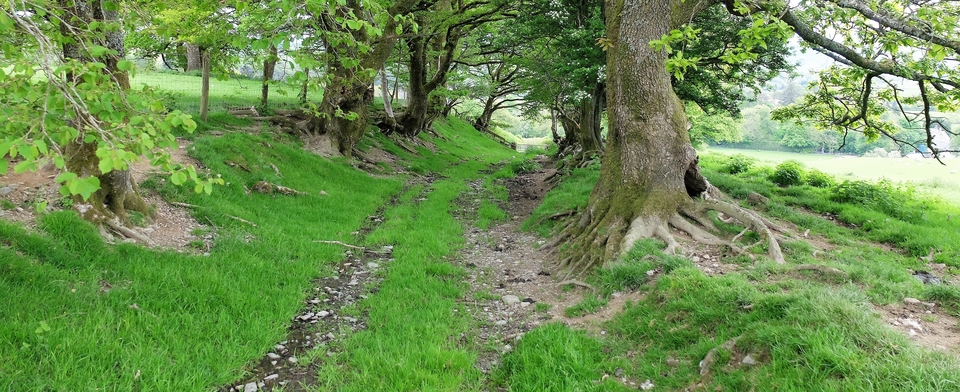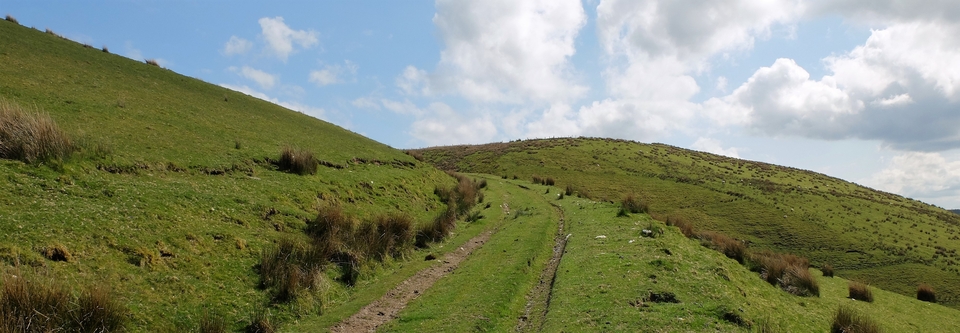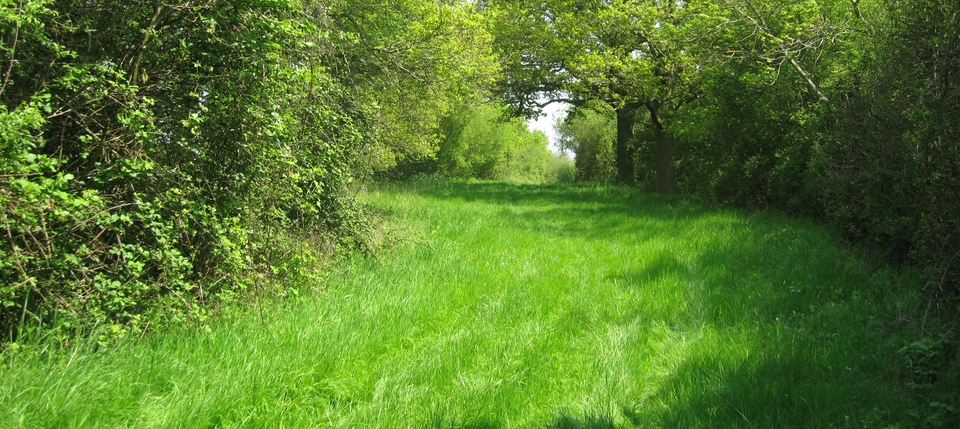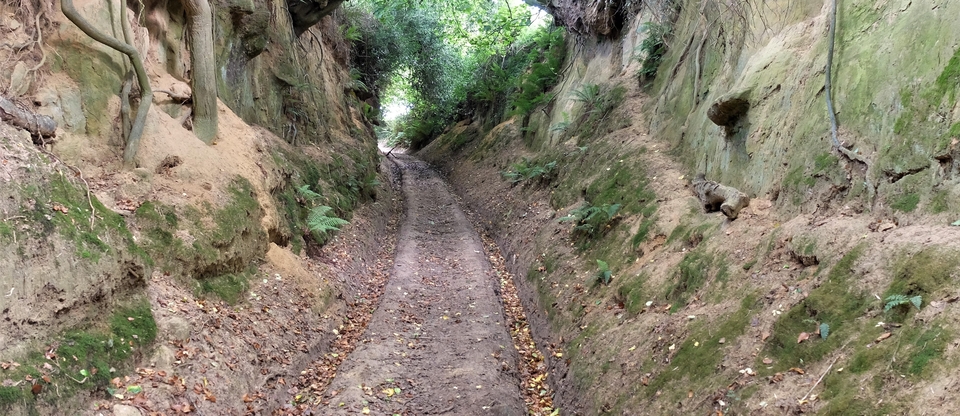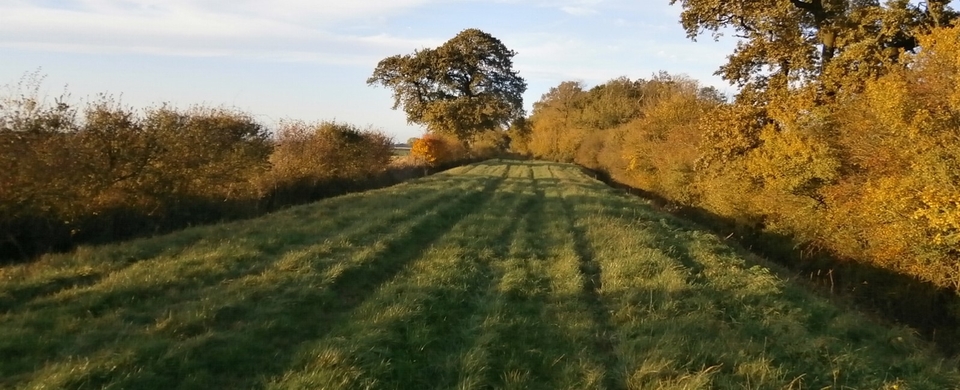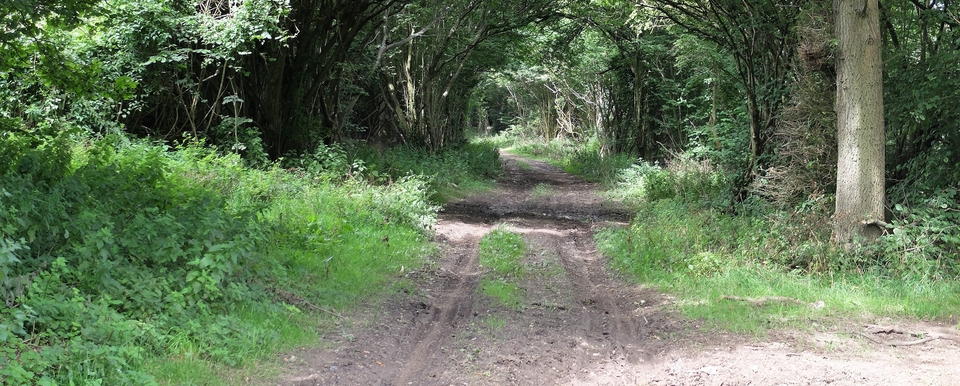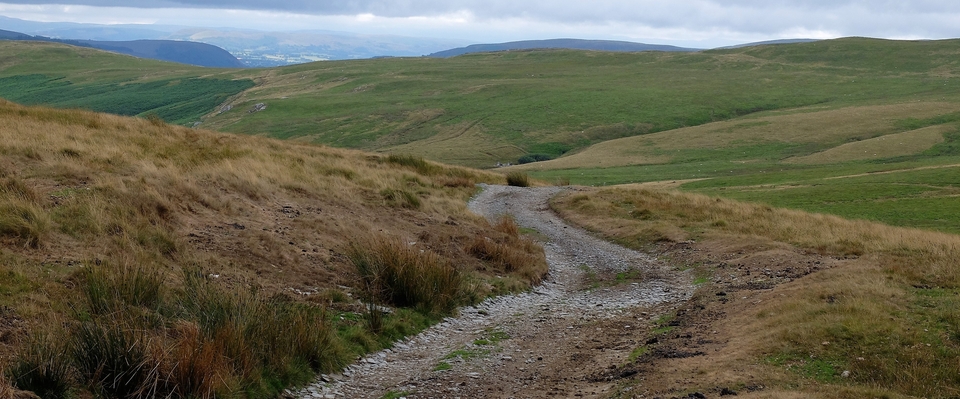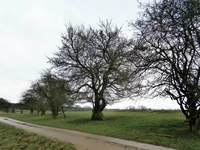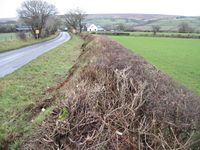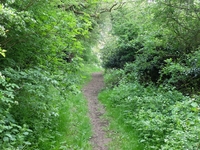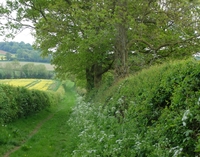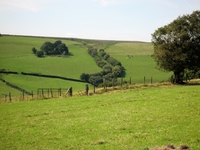Hedges
Most of our hedges appeared between 1680 and 1820 when the old strip-fields were enclosed to provide pasture for sheep. An acceleration in the second half of the 18C was due mainly to a fear that an Independent America would deprive us of the corn we needed (which they grew in abundance).
Nearly all these hedges were hawthorn: it tolerates wet & dry, grows in all soils and, most importantly, doesn't spread sideways: if untended it becomes a tree (#1). The Anglo-Saxon word for hedge ('haga') was the same as the word for hawthorn.
According to the most popular theory, one new species arrives in a hedge every century, which makes them easy to date.
But the most interesting hedges predate enclosures by hundreds of years. I don't know if this applies to #2; what I do know is that the stems are so plentiful that you can walk along the top of it (which is how I got the picture). To qualify as, say, 500+ years old, the line of it would be wavy rather than dead straight.
There are hedges over 1000 years old lining saltways (#3) and Roman roads (#4). Unfortunately they are hardly ever trimmed or cut back, but there is a plentiful variety of shrubs within.
Most interesting of all are the hedges that were originally forest. In land that had never previously been farmed, the villagers would fell the trees and hollow out a few acres of forest, leaving a band of woodland around it to form the hedge.
The nearest I can get to this is #5.
We saw this from afar in Mid-Wales, on the eastern slopes of Mount Epynt. The whole area must have been woodland before the sheep and cattle moved in - like much of Wales, but they kept two strips of forest to separate the drovers' cattle from their own.
